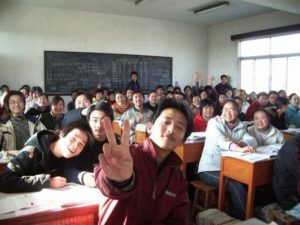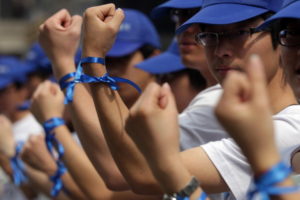People often forget that culture plays a major role in the upbringing of children, particularly those with special needs. Culture has a direct impact on how a given society handles special education.
For example, a commonly recognized trait of autism is a difficulty to make eye contact with others. Clinical professionals screen for what is considered ‘normal’ behavior in the European-American society, but if these criteria are to be applied on a global scale, dangerous assumptions may arise. Most children are encouraged to make eye contact in European-American families, and a failure to do so symbolizes suspicious behavior or a lack of confidence. In other cultures, however, establishing direct eye contact may be considered a sign of disrespect; especially with young children towards adults (Bauer). Therefore, using eye contact or lack thereof as a diagnostic criterion for autism is problematic. It is important to remember these cultural factors when examining the special education systems of other cultures.

Typical American Classroom
AMERICA: In 1976, the Education for All Handicapped Children Act was passed; it recognizes 13 categories of disability: autism, developmental delay, visual impairment, hearing impairment, emotional disturbance, traumatic brain injury, language and speech disorders, deaf-blindness, multiple handicap, physically handicapped, mental retardation, and other health impaired and specific learning ability” (Kritzer). A cumbersome yet effective special education process is consistently implemented in American schools: if a student is struggling in class, the teacher will refer the case to a “Student Study Team”—a problem solving team that includes the school principle, referring teacher, parent of student, and special education professional. If the team’s strategies do not help the child succeed, the child is tested for special education and an Individualized Educational Program is constructed. State laws also limit class size and all schools must have at least one special education professional (Kritzer).
Although perceptions vary from person to person, it is becoming more common for people requiring special assistance to be seen as “neurally diverse” rather than disabled in the US. However, in other cultures people with disabilities are often misunderstood and even feared (Braddick). Take China, for example: although Chinese public awareness on autism is growing, a lot must still be done to remove general misconceptions. Autism is known as ‘zibizheng’(自闭症, literally ‘self-enclosure disorder’) or ‘guduzheng’ (孤独症, literally ‘loneliness disorder’). A common misconception is that autism is merely caused by loneliness, and that children will naturally grow out of it with age. One such famous author named Li Laoxi openly attacks the notions of neurodiversity and “romanticizing (of) autistic children,” and he has many supporters (Guo).

Typical Chinese Classroom
CHINA: In 1986, the Compulsory Education Law of the People’s Republic of China mandated that all children were entitled to nine years of free public education. Six classes of disability are recognized: visual, hearing, intellectual, physical, psychiatric, and multiple impairments (Kritzer). By 1990, 105,000 students with disabilities were in school, 18% of them being placed in general education courses. Class sizes in schools are large—roughly 50-70 children—with no individualized instruction. Teachers often lack special education training and students with disabilities are often ignored. Rules regarding special education are not strongly emphasized, creating a very inconsistent system (Krtizer). Children that deviate severely or even moderately from the typical are still excluded. Most of them do not get the opportunity to go to school at all.

Volunteers raise blue ribbon clad arms during an event to promote better care for autistic people at a school in Wenzhou, East China’s Zhejiang province, April 2, 2012
Culture affects perception and understanding of conditions like autism and therefore affects the quality of special education systems. Thankfully, parental advocacy is on the rise in China for stronger special education opportunities and programs for educating special education teachers are developing rapidly.
Links:
https://files.eric.ed.gov/fulltext/EJ982859.pdf
https://www.whatsonweibo.com/stars-weaklings-autism-public-awareness-china/
http://www.theworldofchinese.com/2018/01/how-is-autism-treated-in-china/
https://aeon.co/essays/what-is-life-like-for-disabled-people-in-china
https://blogs.scientificamerican.com/guest-blog/how-cultural-differences-affect-autism-diagnoses/
I like how you focused on the cultural aspects of the United States and China and how they work with neurodiverse students. While these countries have similar wealth and technological capabilities, the cultural aspects of these countries clearly shows up in how they accommodate neurodiverse students. I would be interested to see how the Chinese school system changes as the parental pressure you talked about will influence educational policy changes. Overall, your blog was informative and enjoyable to read!